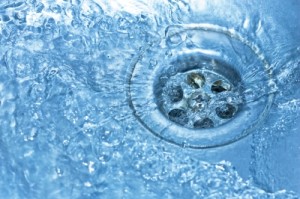A clogged drain, or a blockage in a sewer line, is a very common and potentially expensive plumbing problem and it can lead to other drain-related issues. In the past, the only way to locate the source of the problem was to undertake destructive excavation of the pipes.
Today, plumbers can identify the location of blockages without having to dig by using sophisticated video inspection equipment. A small fiber-optic camera is snaked through the plumbing lines, enabling the plumber to see what’s causing the blockage and also to evaluate the overall condition of the piping system.
 Once the issue has been solved, it’s important to take steps to prevent another clogged drain. Here are some ways to do this:
Once the issue has been solved, it’s important to take steps to prevent another clogged drain. Here are some ways to do this:
- If you wash food particles down the sink, run the garbage disposal immediately afterward. If you don’t, the sink will smell foul after a few hours and the debris will start to accumulate in the pipes, eventually causing a blockage.
- Pour a little fresh lemon juice down the kitchen sink once a day. Lemons contain grease-cutting and odor-neutralizing properties.
- If you suspect that a drain is beginning to clog, mix a cup of baking soda with three cups of hot water. Pour this down the drain and repeat until the water is draining out freely. If you feel that something stronger is needed, add a cup of vinegar to the mixture.
Minor clogged drains can usually be cleared with a plunger. Place it over the drain and use the handle to pull and push several times.






